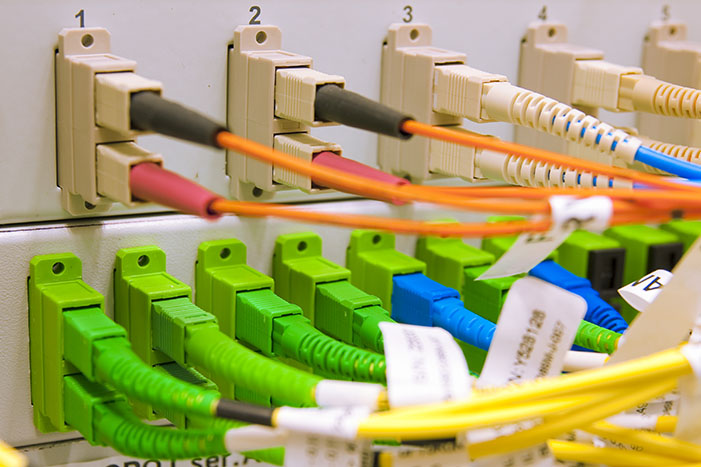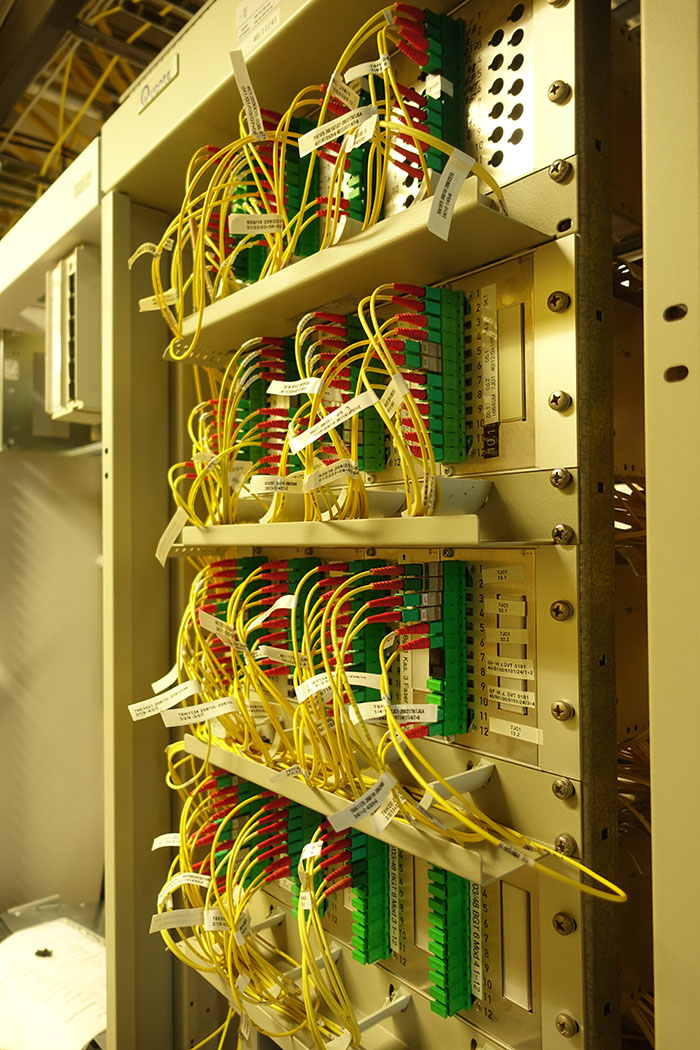In recent years it has become apparent that fiber patch cords are slowly but surely replacing copper wires. This is mainly because of their bandwidth and distance capabilities. They can reach up to 160 kilometers in distance and they can support the network backbone. The fiber patch cord is similar to the copper cables. The main difference is that instead of transmitting electrical impulse, the fiber patch cord transmits optical light and with the help of optical equipment this light is then converted in electrical input.
This works with the help of the optical light transmitter on each end. This transmitter and receiver, is called transceiver, receives electrical input from the networking device, processes it and converts it into an equivalent optical light signal. Using LEDs or VCSELs the transceiver drives this light down an optical fiber cable up to the other end where another transceiver receives the optical light and converts it into an equivalent electrical signal. The optical light, which is in near infrared state, is most often 850nm when it travels short distances and 1310nm when it travels long distances on Multi-mode Fibers. On Single-mode Fibers usually the light is 1310nm for short distances and 1550nm for long distances.
Single- mode cable is a cable with a single strand of optical glass fiber with diameter of 8.3 to 10 microns. Because of this the light is narrower and carries higher bandwidth than Multi-mode Fibers. Single-mode has much smaller core than Multi-mode. Because of this the light-wave is narrower and eliminates any distortion on its way down the cable.


Multi-mode has a larger core than the Single-mode, 50 to 100 microns. Its light is much more bulky and because of this, light-waves are dispersed in numerous ways through the cable. This won’t be a problem for short distances, however in distances greater than 1 kilometer this can cause a light distortion at the far end resulting in incomplete data transmission.
What if you have to connect Multi-mode and Single-mode? Even though, installing a Multi-mode on a Single-mode transceiver is possible, it is highly advisable to use compatible equipment. When trying to mix up the installation it’s highly advisable to pay attention to the device’s specifications which can be found in the device’s datasheet.
When trying to install a Multi- mode Fiber on a Single- mode installation the main thing to keep in mind is to use a Mode Conditioning Patch Cable. This cable is designed and developed to provide a convenient method to connect a Multi- mode Fiber cables with 1000BASE-LX optical modules. Mode Conditioning cables provide the option to calibrate the Multi- mode Fibers with the Single- mode single core modules. They are built in the form of a duplex patch cords so there is no need of any additional components. The need for this kind of a patch cord is the default nature of the 1000BASE-LX modules to launch light of 1310nm down a single optical fiber. If Mode Conditioning Patch Cables are not used, and instead a normal Multi- mode Fiber is used with a Single- mode Transceiver module, the Single- mode Transceiver module will launch the light directly in the center of the cable, causing multiple light signals to be generated thus confusing the receiving module. A Mode Conditioning Patch Cable eliminates this issue allowing the Single- mode launch to be offset away from the center of the multimode fiber. This solution provides a launch similar to typical LED launches. While installing a Multi- mode Fiber onto a Single- mode module is possible, the other way around is not possible due to the bigger light wave of the Multi-mode modules, typically 62.5 microns, which is fired into a 9 microns fiber. This will result in at least 85% of light loss.
The main things to know when using these types of cables are:
- Mode Conditioning Patch Cords require a MC Cable to be connected on each side of the installation.
- When using equipment equipped with LC or SC connectors it’s crucial to keep in mind that the single-mode part of the cable must be connected to the transmit side of the equipment, and the multi-mode part of the cable must be connected to the receive side of the equipment.
Please note that this solution does not have the best quality. Depending on the bandwidth transmissions on multi-mode fibers are limited in their distance.
For this reason it is always recommended to use the multi-mode or single-mode fiber patch cords to match the transceiver to achieve the best connection quality. CBOs BlueOptics © range offers a variety of fiber patch cords, including LC to SC and LC to ST connectors with a 25 year warranty and lifetime service. Get the right Fiber Patch Cord for your needs now!
 English
English
 Deutsch
Deutsch
 Espaniol
Espaniol










